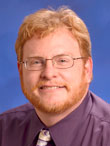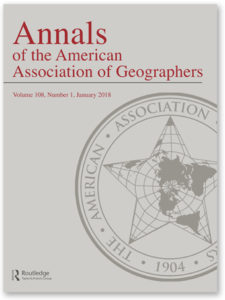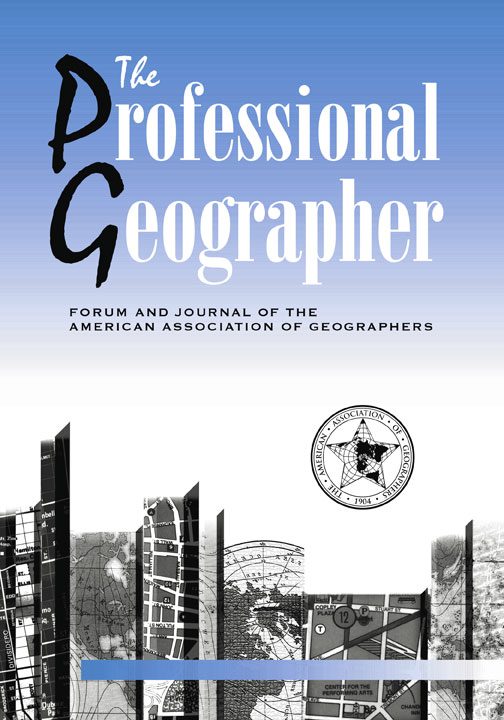Broadening and Caring for the Footprint of Published Scholarship

Many of us can vividly remember the first time we published something and the sense of exhilaration and accomplishment that came with seeing one’s name on an article, chapter, or book. We had good reason to feel that way. The publication was the culmination of long hours spent analyzing data, reviewing literature, developing theory, writing up results and interpretations, and responding to what were sometimes humbling peer reviews.
Given the labor and emotion poured into publishing one’s ideas, it is perhaps natural for many of us to see the final published manuscript at the end of the research process. However, the journey to publication is really just the start of the hard work of scholarship. Also important, I would argue, is promoting and translating publications to wider scholarly, public, and policy audiences. Developing a culture of advocacy and outreach around published research is critical for our individual professional advancement and the overall health of the field of geography.
The purpose of this column is to encourage geographers to broaden the footprint or impact of their publications, to reflect on “pitching” or promoting one’s work as a necessary part of research practice, and to consider the investments and strategies necessary to strengthen the public profile of geographic scholarship. I conclude by advocating for a greater stewardship of the publication process beyond one’s own work, building upon recent calls for a greater ethics of care, mutual aid and inclusion within manuscript review and citation.
We Write Not Just For Ourselves
Our publications are significant personal and professional investments, and it makes sense that we would want to expand who engages our work. There is no greater feeling of frustration than to find one’s scholarship not cited in papers and books that address the same issues we do or to hear a radio broadcast in which a colleague in another discipline speaks on a topic in which you have published extensively. To use a dated pop cultural reference from the 1980s movie Field of Dreams, many of us labor under the false impression that if we “build it, they will come” or, more specific to our case, “if we publish scholarship, they will surely read, reference, and use it.” Yes, good research published in prominent places can and does attract attention on its own, but there is no guarantee that this will always happen and even for some of our most gifted colleagues, it does not happen.
A lack of recognition of our research has important implications for us as individual scholar-teachers and professionals, the perceived relevance of geographic scholarship, and the vitality of geography journals. A recent article in Vox is a disturbing reminder of how much the work of geographers can go unacknowledged within the media. In that piece, a Harvard political scientist—purportedly drawing from psychology—is developing a new area of research called (drum roll) “social geography.” The author failed to provide even a passing mention that social geography has long been a major sub-field in our discipline, a sub-field with its own named international journal (Social & Cultural Geography) and discoverable through even the simplest of Google searches.
The Vox article has understandably drawn outrage from geographers. Although a discipline is not made on the back of a single popular article, gaining visibility and legitimacy within today’s academy and society is very much about claiming the language of how we categorize and represent knowledge production. What is at stake in this article—even as it speaks to how our field has influenced other disciplines—is a lost opportunity for the reading public to truly know who and what geography is and the full rigor of our science. The Vox article’s author offers an interesting experimental study of how political attitudes are shaped by spatial segregation between demographic groups and the mental maps of those groups. Yet, missing is a larger consideration of the spatiality of political life and the social construction of place, something that our discipline has discussed extensively over the past many years.
Citation Profile as an Academic Fact of Life
Promoting one’s work to larger audiences is something that some of us may not have much experience doing. Others may feel uncomfortable taking an active role in disseminating news of publications, feeling that this is not becoming of a scholar. While not dismissing these feelings, the reality is that the advocacy of scholarship has become a necessity in our current political economy of proliferating journals and the increased pressure placed on faculty—even at teaching intensive institutions—to publish and have a record of impact and citation. I see a difference between “citation” and “impact,” recognizing that an impactful publication does not necessarily have to be heavily cited since it may be actively referenced and used by public groups and policy-makers outside of the academy.
Yet, the realities of the neo-liberal university suggest that faculty members—especially non-tenured ones—must convincingly demonstrate that their work is cited among other scientists and scholars. As former AAG President Mona Domosh notes, universities increasingly use citation counts and other metrics to measure research productivity and impact. She says that “we are a discipline that must always act strategically to be in the ‘game’ (of increasing and counting citations),” while not allowing this “audit culture” to hurt our interdisciplinary richness and collegiality.
Journals—interested in their own citation impact profile—now provide advice and software platforms to assist scholars in getting the word out about their publications. Publishers sometimes provide authors a limited number of free article downloads to send to colleagues. Well-heeled scholars, grant teams, and institutions can pay to have publications open access. Authors are being encouraged to post copies of papers on academic sharing sites (ResearchGate, Academia.edu); supplement articles with extra data, videos, and podcasts; use social media (Twitter, Facebook, LinkedIn) to share publication news; and lead readers to published work by writing blogs, op-eds, and content for outlets such as The Conversation, Huffington Post, and Medium.
All of these mechanisms have the potential to drive traffic to one’s publications but they also require additional labor and time, which you may or may not be able to contribute. Given the large amount of revenue that academic journals and commercial presses generate, they could and should do more to take a direct hand in promoting their publications rather than passing that responsibility on to authors. It is key to take on research promotion efforts that make sense in light our many other duties, but this is not to suggest that we do nothing. Even the smallest effort, if properly targeted and conceived, can have a positive impact.
Publishing is Also a Matter of Pitching
No matter how many or which promotional strategies you take on to broaden the footprint of your publication, one thing is certain—you will need a good “pitch.” By pitch, I mean a brief and compelling statement that persuades a wider audience that your published research is significant and worth learning about. Developing a pitch sounds like something easily accomplished, but it is actually challenging.
I have learned about the art of pitching from Lola Alapo, a public relations and science communication specialist at the University of Tennessee. For the past two years, Lola has led media training sessions with early career faculty in our Geography Faculty Development Alliance (GFDA) summer workshops. Because Lola spends most of her time preparing press releases, she focuses on pitching recently published scientific innovations to journalists, but her general advice applies to a variety of audiences you might engage.
According to Lola, pitching a publication requires being able to summarize the major purpose and significance of one’s work in clear and enticing ways. Remember the pitch cannot capture all that the publication is about; rather, it gets your foot in the door for longer and deeper conversations with journalists, policy agencies, and other scientists. Lola encourages faculty to translate their latest research in three to four sentences and to do so in terms accessible and appropriate to the target audience. In pitching publications to the media, for example, assume you are communicating with an 8th grader. It is also important to extrapolate applications of your research and speak directly to how it advances the way we think about a pressing issue or debate.
Promoting takes practice and it might be worthwhile to share your pitch to someone (ideally, a non-geographer) or to watch how others do it. Lola suggests consulting #TweetYourDissertation or Three Minute Thesis on Twitter to get an idea of how others distill their work into concise and engaging statements. She is of the opinion that interesting, newsworthy research publications are those that tell an evocative story and it is important not to be afraid to include yourself in that story. Journalists and the public are often interested in knowing why we study what we do, which also provides an excellent opportunity to answer the proverbial question: “What exactly does a geographer do?”
Stewardship of the Publication Process
Finally, in arguing for a greater advocacy of geographical scholarship, I suggest that we expand our focus beyond simply maximizing the influence of our own publications, but consider what active role we can play as stewards or caretakers of the publication process for others in the discipline. Two recent publications by geographers provide sobering reminders that academic publishing, while it may appear to be an individual meritocracy, is actually a collective enterprise shaped by social practices that can facilitate or inhibit the participation, recognition, and potential footprint of wider communities of scholars.
Simon Springer, Myriam Houssay-Holzschuch, Claudia Villegas and Levi Gahman note that scholars are increasingly declining invitations to assist in the peer review process, an observation I have heard from a host of other journal editors. Simon and his colleagues argue for peer review as a form of mutual aid and cooperation necessary for delivering timely and helpful editorial decisions to contributors. They see support of peer review as upholding an ethic of care and responsibility to authors, especially for those scholars just beginning to establish their careers and professional footprints. Simon, Myriam, Claudia, and Levi call on geographers to: “Make time for it (peer review), as others have made time for you.”
Carrie Mott and Daniel Cockayne direct our attention to the politics of citing published research. Citation practices, more than innocent metrics for measuring scholarly impact, are complicit in the reproduction of racialized and gendered power hierarchies in the academy and the lack of acknowledgement given to the intellectual contributions of women, people of color, students, and non-academics. These unequal footprints have consequences for what counts for geographical knowledge and the professional life chances and job security of under-represented scholars. Carrie and Daniel suggest that authors, editors, and reviewers “rethink citation as a form of conscientious engagement,” examine who is cited (or not) within research, and encourage including and giving visibility to a greater range of voices in publications.
I am interested in knowing how AAG members are expanding the footprint and influence of their research, how they pitch or promote publications, and the challenges they face in navigating geography’s publication culture. Please share your thoughts and experiences by emailing me (dalderma [at] utk [dot] edu) or share on Twitter #PresidentAAG.
— Derek Alderman @MLKStreet
Professor Geography, University of Tennessee
President, American Association of Geographers
DOI: 10.14433/2017.0020

